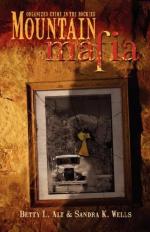|
This section contains 2,957 words (approx. 10 pages at 300 words per page) |

|
From the 1920s onward, the Mafia, and organized crime in general, have retained a hold on the popular imagination. Bank robbers, bootleggers, and Mafia dons have received considerable press, not all unfavorable. Cast as anti-heroes, fictional and real-life mobsters like Al Capone, Vito Corleone, and John Gotti have often been portrayed in a sympathetic light. Drawn with a romantic touch, literary and cinematic Mafiosi, in particular, have been depicted as honorable men, in their own fashion. Their luxurious life-styles have enabled them to serve as anti-Horatio Alger exemplars of the American Dream. The Mafia's appeal is often ambivalent, as exemplified by the fate that generally befalls even the greatest of the Dons. Nevertheless, it suggests the subversive potential that popular culture possesses: its ability to provoke, incite, or agitate, while challenging established verities.
Organized criminal groups have had a long history in American society...
|
This section contains 2,957 words (approx. 10 pages at 300 words per page) |

|


